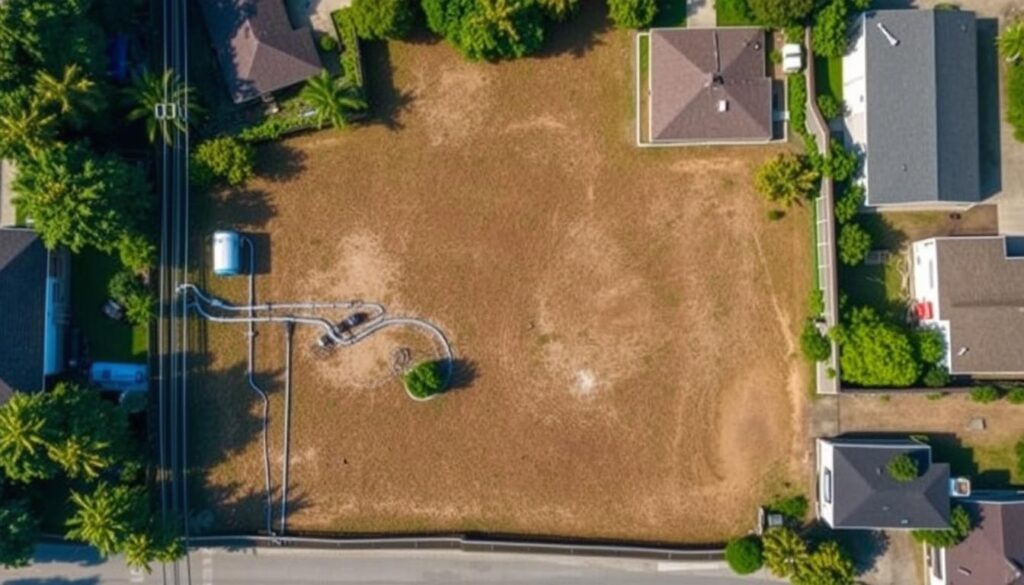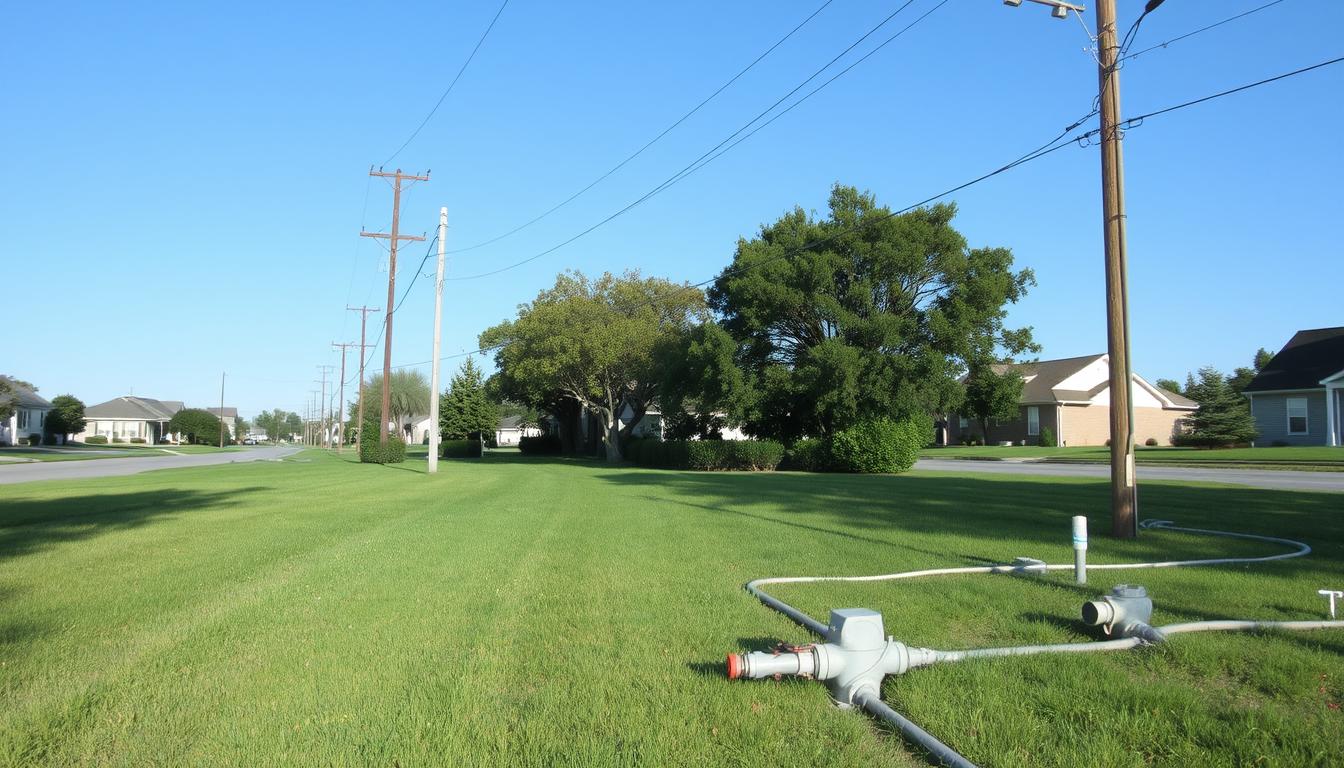How to tell if a lot has access to utilities is a crucial question for anyone buying land or investing in real estate. Finding out if a lot has utilities can be hard, but it’s key to making informed decisions. Knowing how to check for utilities is very important.
Buying land without checking utilities can cause big problems. About 30% of buyers don’t check zoning laws first. This can lead to big financial losses and disappointments.
To see if a lot has utilities, do lots of research. Talk to local utility companies too. Getting a professional to check can help avoid big problems.
Key Takeaways
- Verify utility access before purchasing land
- Understand local zoning restrictions
- Conduct professional utility connection assessments
- Budget for potential utility connection costs
- Investigate potential property line and easement issues
Understanding Utility Access Fundamentals
Checking if utilities are available is key for anyone buying land or developing it. You need to do your homework and plan well. The value of the land and how it can be used depend on good infrastructure.
Buying land can be tough, especially when it comes to utilities. Knowing what utilities you need can save you money and time.
Essential Utilities to Verify
- Water supply systems
- Electrical infrastructure
- Sewer and waste management
- Natural gas or alternative energy sources
- Telecommunications and internet connectivity
- Road and access infrastructure
Importance of Utility Verification
Checking utilities thoroughly has many benefits. Utility locator services can give you detailed maps and info. This helps buyers make smart choices.
About 30% of new projects face delays or cost increases because of unknown utility access at purchase.
Common Utility Access Challenges
Potential problems include:
- High costs for new utility lines
- Rules and regulations
- Location issues
- Distance from current utilities
Knowing these issues helps buyers plan and budget better. Doing your homework can save a lot of time and money.
How to Tell if a Lot Has Access to Utilities

Finding out if a lot has utilities is important. Buyers and developers need to check this to avoid problems. It’s key for smooth development or buying.
Here are some ways to check utility access:
- Contact local utility providers directly
- Conduct comprehensive site inspections
- Review detailed property records
- Utilize modern technological resources
Checking utilities is a detailed process. Gathering accurate info is key to knowing a property’s potential.
“Knowing your lot’s utility access can save thousands in unexpected infrastructure costs.” – Real Estate Development Experts
Here are some practical ways to verify:
- Request utility maps from local offices
- Use GIS mapping services
- Engage professional land surveyors
- Look into property easement documents
| Verification Method | Estimated Cost | Accuracy Level |
|---|---|---|
| Municipal Utility Records | $0-$50 | High |
| Professional Land Survey | $375-$750 | Very High |
| GIS Mapping Services | $25-$100 | Medium |
Digital tools like LandGlide and Regrid offer lots of property data. They cover 99% of U.S. people. These tools give deep insights into utilities and property details.
Remember, good research stops future problems. Getting expert advice and doing a full check is vital for smart property choices.
Legal Considerations and Requirements
Understanding the laws about utility access is key. Property owners need to know many rules. They must be ready for legal challenges when checking if utilities are available.
Utility Easements and Property Rights
Utility easements are important for land use. Knowing your rights helps in making smart land use choices.
- Easements let utility companies get to your land for upkeep
- Most lands have easements that stay with the land when sold
- Easements can really change how you can use your land
Permits and Regulatory Compliance
Getting the right permits is crucial. Rules can change a lot. So, property owners must:
- Look up local rules for utility connections
- Get the needed city permits
- Follow zoning and land use laws
Cost and Timeline Considerations
| Utility Type | Average Connection Cost | Typical Timeline |
|---|---|---|
| Electricity | $1,000 – $3,000 | 2-4 weeks |
| Water | $2,000 – $5,000 | 3-6 weeks |
| Sewage | $3,000 – $6,000 | 4-8 weeks |
Always talk about utility easements before buying land.
Pro tip: Talk to local utility companies and a real estate lawyer. They can explain the legal side of utility access on your land.

Conclusion
Knowing how to check utility access for a lot is key for buyers or developers. It’s important to do research and plan well to avoid extra costs. Spending time to check utility availability can save a lot of money and trouble.
When checking if a lot has utilities, look at many things. Cities usually have better connections, but rural areas might need special solutions like solar panels. Knowing if utilities are there can make a property more valuable by attracting buyers.
Doing your homework is the main thing. You need to look at costs, local rules, and plans for the future. Knowing about utilities can turn a risky buy into a smart choice. Always talk to local providers and do deep research before buying land.
Getting land right is more than just finding a spot. It’s about knowing what makes a property good and valuable. By using what you learned here, you can make smart choices that protect your money and help your projects succeed.

